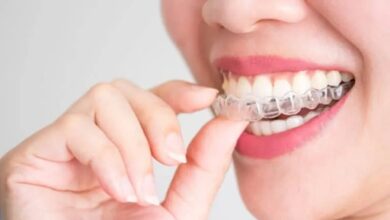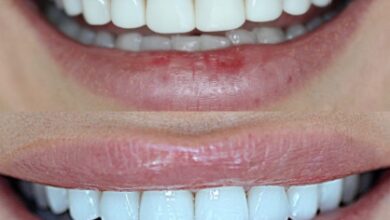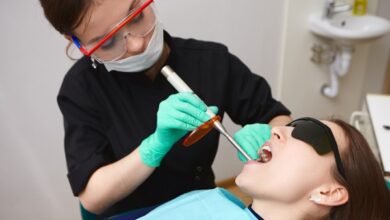Dental Implants for Kids and Teens: Is It Safe?

Tooth loss is typically associated with adults, especially seniors. However, children and teenagers can also lose teeth due to accidents, congenital conditions, or severe dental disease. When this happens, parents and caregivers are often left wondering what the best long-term solution is. One option that may come up during a dental consultation is dental implants. However, the pressing question remains: Are dental implants safe for children and teenagers?
If you’re exploring options for your child or teen, it’s important to consult an experienced implant dentist. Dental Implants Perth specialists can assess jaw maturity and overall oral health to determine the right timing and approach for treatment.
Understanding Dental Implants: A Quick Overview
A dental implant is an artificial tooth root, typically made of titanium, that is surgically placed into the jawbone to replace a missing tooth. It acts as a base for attaching a crown, bridge, or even a complete denture. Dental implants are widely regarded as the most natural-looking, durable, and permanent solution for tooth replacement.
For adults, implants are often the go-to recommendation. However, when it comes to children and teenagers, bone growth, jaw development, and oral maturity complicate the equation.
Why Do Kids and Teens Lose Teeth?
When tooth loss happens at a young age, it’s essential to explore long-term solutions. For older teens who have completed jaw growth, dental implants Brisbane professionals can offer safe, durable replacements that function just like natural teeth.
Tooth loss during childhood is common—but not always planned. Kids naturally lose their baby teeth, but some may also lose permanent (adult) teeth due to:
- Accidents or trauma (e.g., sports injuries, falls)
- Congenital conditions (e.g., missing teeth from birth)
- Severe decay or infection
- Orthodontic complications
- Gum disease (less common in children, but possible)
While missing a baby tooth is no cause for concern, losing a permanent tooth at a young age often leads to questions about long-term restoration options.
The Role of Growth in Implant Eligibility
The primary reason dental implants are not immediately recommended for children and younger teens is due to ongoing jaw development.
Why Growth Matters
When an implant is placed, it fuses with the jawbone in a process known as osseointegration. However, unlike natural teeth, which shift and move with jaw growth, implants remain stationary. If a child’s jaw continues to grow after an implant is placed, it could lead to:
- Misalignment of the implant
- Imbalance in tooth spacing
- Uneven gumlines or bite issues
- Sunken or protruding appearance of the implant over time
At What Age Is Growth Complete?
Most dental professionals recommend waiting until jaw growth has fully stabilised, which typically occurs:
- Girls: Around 16–17 years of age
- Boys: Around 17–18 years of age
However, every individual develops at their own pace. Dentists may use X-rays and growth scans to confirm whether jaw growth is complete before recommending implants.
Are Dental Implants Safe for Kids and Teens?
Yes—But Only Under Certain Conditions
Dental implants are safe and effective for older teens whose growth plates have closed and who meet the following conditions:
- Healthy gums and oral hygiene
- No active periodontal disease
- Sufficient bone density
- Non-smoker or willing to abstain
- No uncontrolled medical conditions (e.g., diabetes)
For younger children, dental implants are not generally recommended unless in rare, medically justified situations.
Exceptional Circumstances: When Early Implants May Be Considered
There are exceptional cases where dental implants may be considered earlier:
1. Congenital Tooth Absence (Hypodontia)
Children born with missing permanent teeth (a condition known as hypodontia or oligodontia) may require early planning for implants. In such cases, temporary prosthetics may be used until implant placement is safe.
2. Severe Trauma or Disease
Suppose a child loses a tooth in an accident or due to an infection that impacts the surrounding teeth and jaw. In that case, an implant may be considered at an earlier age—but only after careful planning and consultation with a specialist.
3. Craniofacial Anomalies
Children with specific syndromes or congenital disabilities may receive interdisciplinary care that involves surgeons, orthodontists, and pediatric dentists, where implant placement is part of a comprehensive treatment plan.
Alternatives to Dental Implants for Younger Patients
If implants are off the table due to age, there are effective temporary solutions available until the child or teen becomes a candidate:
1. Orthodontic Space Maintenance
Braces or retainers can help keep the space open for a future implant. This is critical for proper alignment and bite.
2. Removable Partial Dentures
These are custom-made devices that can be worn during the day to fill gaps in your teeth. They are affordable and functional but may require adjustment as the child grows.
3. Maryland Bridge
This type of bridge is bonded to adjacent teeth and used as a semi-permanent solution. It’s minimally invasive but not ideal for long-term wear.
4. Temporary Dental Bonding
In some cases, cosmetic bonding can be used to create the illusion of a whole tooth, particularly in visible areas such as the front teeth.
The Long-Term Plan: What to Expect
For young patients, a staged approach is typically recommended:
- Tooth Loss: A child loses a permanent tooth.
- Immediate Care: Space is maintained using orthodontics or a temporary prosthesis.
- Growth Monitoring: Regular dental checkups and X-rays track jaw development.
- Implant Evaluation: Once growth is complete, implant candidacy is assessed.
- Implant Placement: Surgical insertion of the implant post, followed by healing.
- Final Crown Placement: The custom crown is attached to restore full function and aesthetics.
This process can take several years but ensures a safe and effective outcome with minimal complications.
What Parents Should Know
Parental Role Is Critical
Both immediate and long-term therapy approaches require the active participation of parents. This comprises:
- Keeping up with dental visits
- Keeping an eye on dental health
- Endorsing short-term fixes
- Talking to their child about the social and emotional effects
Addressing Self-Esteem Concerns
A child’s confidence can be greatly impacted by a missing tooth, especially in their early years. Supportive treatment, short-term cosmetic procedures, and early discussions can all help to preserve emotional health.
Potential Risks and Complications
For children and teens who receive implants too early, the risks include:
- Poor aesthetic outcomes due to shifting surrounding teeth
- Bone or implant failure due to growth interference
- Increased need for future surgical corrections
- Psychological distress if the implant fails or appears unnatural
Even in teens with completed growth, potential risks (though rare) include:
- Infection
- Nerve damage
- Implant failure
- Gum recession
These risks can be minimised through proper planning, selecting reputable dental providers, and maintaining good oral hygiene habits.
Choosing the Right Dental Team
Selecting the right professionals is essential for safe and successful outcomes. Look for:
- Paediatric dentists with implant experience
- Prosthodontists for long-term planning
- Orthodontists for space and growth management
- Oral surgeons for implant placement
An interdisciplinary approach ensures that every aspect of your child’s dental health is considered, from aesthetics to function and growth.
Cost Considerations
Dental implants are a significant investment—both financially and emotionally. The cost of implant treatment can range between $4,000 to $6,500 per tooth in Australia.
Nevertheless, this does not always consist of:
- Consultations and scans
- Temporary prosthetic devices
- Extra procedures (like bone transplants)
- Continuous upkeep
Thankfully, a portion of the expense may be covered by certain private health insurance plans. It can be made more accessible with the use of payment plans and tiered treatment.
Final Thoughts: Is It Worth the Wait?
In most cases, waiting until the jaw has stopped growing is the best course of action for placing dental implants in kids and teens. While it may be tempting to pursue a permanent solution early, premature implant placement often leads to more problems than it solves.
Dental implants are a highly successful, long-term solution for missing teeth—but only when placed at the right time. With proper planning, temporary options, and regular checkups, your child or teen can maintain both their oral health and self-esteem until they’re ready for this life-changing treatment.




